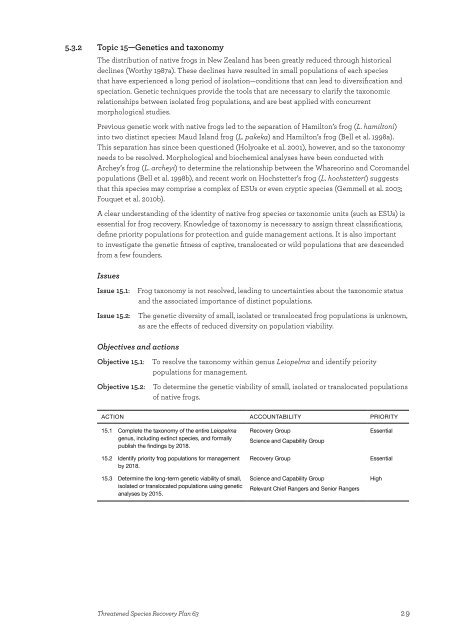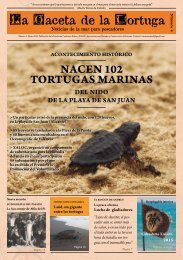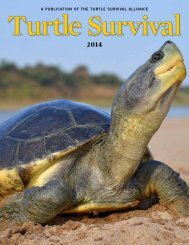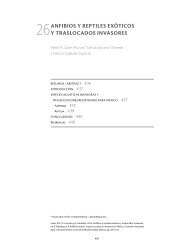tsrp63entire
tsrp63entire
tsrp63entire
You also want an ePaper? Increase the reach of your titles
YUMPU automatically turns print PDFs into web optimized ePapers that Google loves.
5.3.2 Topic 15—Genetics and taxonomy<br />
The distribution of native frogs in New Zealand has been greatly reduced through historical<br />
declines (Worthy 1987a). These declines have resulted in small populations of each species<br />
that have experienced a long period of isolation—conditions that can lead to diversification and<br />
speciation. Genetic techniques provide the tools that are necessary to clarify the taxonomic<br />
relationships between isolated frog populations, and are best applied with concurrent<br />
morphological studies.<br />
Previous genetic work with native frogs led to the separation of Hamilton’s frog (L. hamiltoni)<br />
into two distinct species: Maud Island frog (L. pakeka) and Hamilton’s frog (Bell et al. 1998a).<br />
This separation has since been questioned (Holyoake et al. 2001), however, and so the taxonomy<br />
needs to be resolved. Morphological and biochemical analyses have been conducted with<br />
Archey’s frog (L. archeyi) to determine the relationship between the Whareorino and Coromandel<br />
populations (Bell et al. 1998b), and recent work on Hochstetter’s frog (L. hochstetteri) suggests<br />
that this species may comprise a complex of ESUs or even cryptic species (Gemmell et al. 2003;<br />
Fouquet et al. 2010b).<br />
A clear understanding of the identity of native frog species or taxonomic units (such as ESUs) is<br />
essential for frog recovery. Knowledge of taxonomy is necessary to assign threat classifications,<br />
define priority populations for protection and guide management actions. It is also important<br />
to investigate the genetic fitness of captive, translocated or wild populations that are descended<br />
from a few founders.<br />
Issues<br />
Issue 15.1:<br />
Issue 15.2:<br />
Frog taxonomy is not resolved, leading to uncertainties about the taxonomic status<br />
and the associated importance of distinct populations.<br />
The genetic diversity of small, isolated or translocated frog populations is unknown,<br />
as are the effects of reduced diversity on population viability.<br />
Objectives and actions<br />
Objective 15.1:<br />
Objective 15.2:<br />
To resolve the taxonomy within genus Leiopelma and identify priority<br />
populations for management.<br />
To determine the genetic viability of small, isolated or translocated populations<br />
of native frogs.<br />
Action Accountability Priority<br />
15.1 Complete the taxonomy of the entire Leiopelma<br />
genus, including extinct species, and formally<br />
publish the findings by 2018.<br />
15.2 Identify priority frog populations for management<br />
by 2018.<br />
15.3 Determine the long-term genetic viability of small,<br />
isolated or translocated populations using genetic<br />
analyses by 2015.<br />
Recovery Group<br />
Science and Capability Group<br />
Recovery Group<br />
Science and Capability Group<br />
Relevant Chief Rangers and Senior Rangers<br />
Essential<br />
Essential<br />
High<br />
Threatened Species Recovery Plan 63<br />
29





